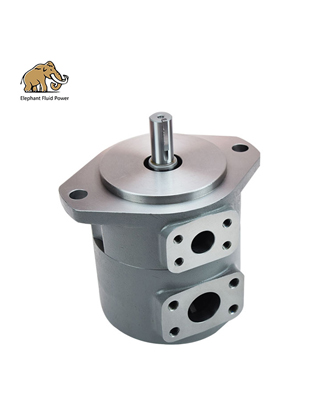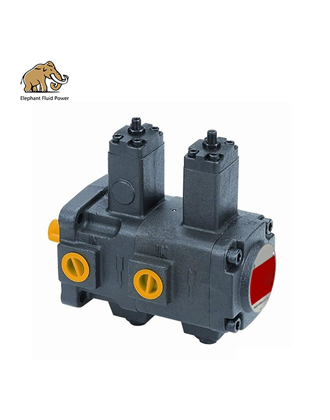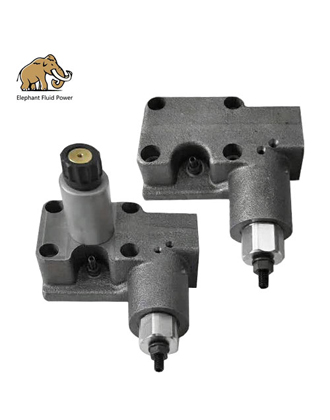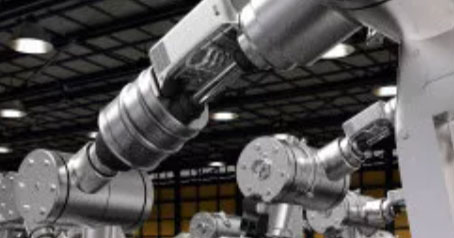In the realm of hydraulic systems, piston pumps are instrumental in converting mechanical energy into fluid power. Over time, piston pump spare parts wear out due to the demanding conditions they operate in. The replacement of these parts is a crucial aspect of maintaining the efficiency and reliability of hydraulic systems. In this blog, we'll delve into the process of replacing piston pump spare parts, the benefits it offers, and the steps to ensure a seamless replacement.
Signs of Worn-Out Parts
A drop in fluid flow rate, pressure, or overall pump efficiency can indicate that certain spare parts have reached the end of their operational life. If there is noticeable fluid leakage around the pump or its components, it could be a sign that seals, gaskets, or O-rings need replacement. Unusual noises like knocking, grinding, or clicking during pump operation can be indicative of worn-out components.
Benefits of Timely Replacement
Replacing worn piston pump spare parts helps maintain the pump's efficiency and prevents a decline in performance. Regular replacement of parts prevents further damage and contributes to the overall longevity of the piston pump. Addressing minor issues through timely replacement prevents them from escalating into major failures that could result in costly downtime and repairs.
Steps for Successful Replacement
Diagnose the specific issues affecting the pump's performance to determine which spare parts need replacement. Select high-quality spare parts from reputable manufacturers or authorized distributors to ensure compatibility and reliability. Consult the pump's manufacturer guidelines and technical documentation for instructions on proper spare parts replacement. Ensure you have the necessary tools, equipment, and a clean work area to facilitate a smooth replacement process. Disassemble the pump systematically, keeping track of the removal of each component and their respective positions. Inspect the interior components of the pump for any debris, contaminants, or signs of wear. Clean the components as needed. Install the new piston pump spare parts following the manufacturer's instructions, ensuring proper alignment and torque specifications.
The replacement of piston pump spare parts is a critical maintenance practice that ensures the continued efficiency and reliability of hydraulic systems. By identifying worn-out components, sourcing quality spare parts, and following manufacturer guidelines, industries can optimize pump performance, extend equipment lifespan, and prevent costly downtimes. A systematic approach to replacement contributes to the seamless operation of hydraulic systems and underscores the importance of proactive maintenance practices.
 French
French
 Portuguese
Portuguese
 Russian
Russian
 German
German
 Spanish
Spanish
 Japanese
Japanese
 Korean
Korean
 Irish
Irish
 Greek
Greek
 Turkish
Turkish
 Italian
Italian
 Danish
Danish
 Romanian
Romanian
 Indonesian
Indonesian
 Czech
Czech
 Afrikaans
Afrikaans
 Swedish
Swedish
 Polish
Polish
 Basque
Basque
 Catalan
Catalan
 Esperanto
Esperanto
 Hindi
Hindi
 Lao
Lao
 Albanian
Albanian
 Amharic
Amharic
 Armenian
Armenian
 Azerbaijani
Azerbaijani
 Belarusian
Belarusian
 Bengali
Bengali
 Bosnian
Bosnian
 Bulgarian
Bulgarian
 Cebuano
Cebuano
 Chichewa
Chichewa
 Corsican
Corsican
 Croatian
Croatian
 Dutch
Dutch
 Estonian
Estonian
 Filipino
Filipino
 Finnish
Finnish
 Frisian
Frisian
 Galician
Galician
 Georgian
Georgian
 Gujarati
Gujarati
 Haitian
Haitian
 Hausa
Hausa
 Hawaiian
Hawaiian
 Hebrew
Hebrew
 Hmong
Hmong
 Hungarian
Hungarian
 Icelandic
Icelandic
 Igbo
Igbo
 Javanese
Javanese
 Kannada
Kannada
 Kazakh
Kazakh
 Khmer
Khmer
 Kurdish
Kurdish
 Kyrgyz
Kyrgyz
 Latin
Latin
 Latvian
Latvian
 Lithuanian
Lithuanian
 Luxembourg
Luxembourg
 Macedoniar
Macedoniar
 Malagasy
Malagasy
 Malay
Malay
 Malayalam
Malayalam
 Maltese
Maltese
 Maori
Maori
 Marathi
Marathi
 Mongolian
Mongolian
 Burmese
Burmese
 Nepali
Nepali
 Norwegian
Norwegian
 Pashto
Pashto
 Persian
Persian
 Punjabi
Punjabi
 Serbian
Serbian
 Sesotho
Sesotho
 Sinhala
Sinhala
 Slovak
Slovak
 Slovenian
Slovenian
 Somali
Somali
 Samoan
Samoan
 Scots Gaelic
Scots Gaelic
 Shona
Shona
 Sindhi
Sindhi
 Sundanese
Sundanese
 Swahili
Swahili
 Tajik
Tajik
 Tamil
Tamil
 Telugu
Telugu
 Thai
Thai
 Ukrainian
Ukrainian
 Urdu
Urdu
 Uzbek
Uzbek
 Vietnamese
Vietnamese
 Welsh
Welsh
 Xhosa
Xhosa
 Yiddish
Yiddish
 Yoruba
Yoruba
 Zulu
Zulu







